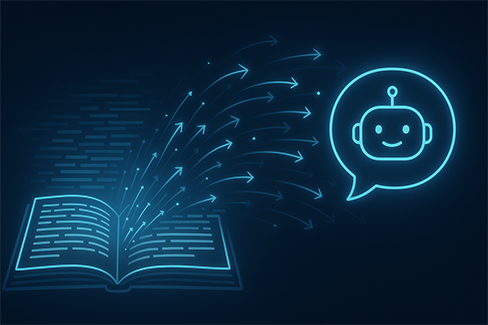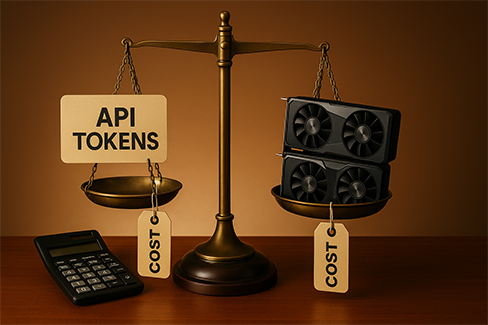Regulatory landscape: GDPR, CCPA, and sector-specific requirements
Generative AI workflows operate at the intersection of data protection laws and emerging tech. Regulations like GDPR (EU) and CCPA (California) set broad rules around personal data, while sector-specific frameworks (HIPAA for healthcare, PCI DSS for finance, FERPA for education) add stricter requirements.
Key obligations:
- Transparency: Users must know how their data is used.
- Data minimization: Collect and process only what is necessary.
- Consent: Explicit in sensitive use cases.
- Right to erasure and access: Must extend to data fed into AI systems.
Non-compliance risks include multi-million-dollar fines, reputational damage, and loss of customer trust.
Data flows in AI workflows: where privacy breaks

Generative AI involves multiple data handling stages, each with its own risks.
Training data vs inference data implications
- Training data: May contain PII if scraped from web, logs, or internal systems. Once trained, models may memorize and regurgitate sensitive details.
- Inference data: User prompts and outputs can include confidential or personal info. Storing these without safeguards violates GDPR/CCPA.
Third-party API calls and data residency
- APIs: Calls to OpenAI, Anthropic, or other vendors often send data to US/EU servers. Cross-border transfers trigger GDPR restrictions.
- Residency: Some industries require data to stay within national or sector-specific boundaries (e.g., EU cloud-only processing).
Privacy gaps often emerge at the inference stage—where teams log user queries without anonymization.
Practical privacy-preserving AI techniques
Differential privacy in real context
Injects mathematical noise into data or outputs, reducing risk of re-identification. Useful for analytics and large-scale training, less common for inference logs due to accuracy trade-offs.
Federated learning for specific cases
Model training occurs on local devices or servers, with only updates shared back to a central model. Applied in healthcare (hospitals keep patient data local) and finance. Downsides: infra complexity, slower convergence.
Data anonymization and synthetic data
- Anonymization: Strip names, IDs, or apply hashing. Needs continuous monitoring—re-identification is possible.
- Synthetic data: Generate statistically similar but artificial datasets. Great for testing, but regulators may question its validity in audits.
Vendor evaluation: assessing AI providers’ compliance
Checklist when choosing AI vendors:
- Do they publish data retention policies?
- Is data encrypted at rest and in transit?
- Can you control data residency (EU-only, HIPAA-compliant servers)?
- Do they undergo regular audits (SOC 2, ISO 27001, HIPAA attestations)?
- Do they allow opt-out from training on your data?
Vendors without clear compliance frameworks expose you to regulatory risk.
Technical implementation: auditing and monitoring
- Logging: Track all AI inputs/outputs, but mask or hash sensitive data.
- Access control: Restrict who can view logs or model responses.
- Monitoring: Tools like DataDog, Splunk, or custom dashboards can alert on anomalies.
- Periodic audits: Verify that storage, API calls, and model usage align with privacy policies.
Audit trails are not optional—they’re the backbone of compliance reporting.
Industry-specific considerations
Healthcare (HIPAA) and fintech (PCI DSS)
- HIPAA: AI vendors must sign Business Associate Agreements (BAA). Logs must exclude PHI or be de-identified.
- PCI DSS: Cardholder data cannot be exposed in prompts or logs. Use tokenization before passing to AI APIs.
Education (FERPA) and government
- FERPA: Protect student records, ensure AI tools don’t expose identifiable academic data.
- Government: Increasing requirements for sovereign clouds and AI systems with auditability and explainability.
Incident response for AI privacy breaches
When AI workflows leak or misuse data, treat it as a data breach:
- Contain: Stop logging or API calls that expose data.
- Notify: Regulatory bodies (GDPR: within 72h), impacted users.
- Investigate: Identify whether the issue was training data, inference logging, or vendor API leakage.
- Remediate: Patch, retrain, or mask.
AI-specific breaches (e.g., hallucinating real user data) must be logged and disclosed with the same rigor as traditional breaches.
Future-proofing: emerging regulations and standards
Upcoming frameworks will push AI privacy further:
- EU AI Act: Risk-based compliance (high-risk systems = strict transparency).
- ISO/IEC 42001: New AI management standard for governance.
- NIST AI Risk Management Framework: Guidance for US companies.
Organizations should design AI systems with privacy-by-design principles now: minimize data collection, enforce retention limits, and prepare for auditable transparency.
Privacy and compliance in generative AI workflows require more than just technical controls. Teams must align with GDPR/CCPA, sectoral laws, and emerging global standards. The path forward is a layered strategy: pick compliant vendors, apply privacy-preserving techniques, audit regularly, and plan for incidents.
Done right, AI can be both innovative and compliant—protecting user trust while delivering business value.
FAQs
Is using OpenAI or Anthropic GDPR-compliant by default?
Not automatically. You must review data residency, retention, and cross-border transfers.
Can anonymization alone make AI safe?
No. Re-identification is still possible. Combine with encryption, retention policies, and minimization.
What’s the fastest win for compliance in AI?
Stop logging raw prompts and outputs with sensitive data. Mask or hash them before storage.


